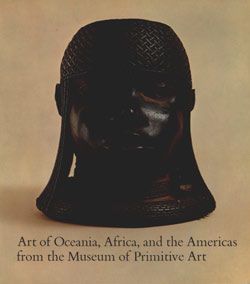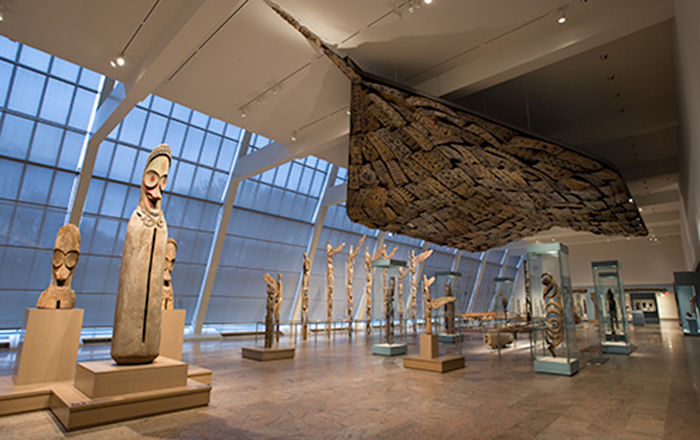Ntomo Mask
Not on view
In consultation with Robert Goldwater, then director of New York’s now-defunct Museum of Primitive Art (MPA), Nelson A. Rockefeller and the MPA acquired several Ntomo association face masks that now are in the Metropolitan Museum of Art’s collection. Goldwater included some of the masks in the MPA’s 1960 landmark exhibition of Bamana art. In the exhibition’s accompanying publication, Goldwater describes Ntomo face masks as "among the most interesting of the Bambara [or Bamana] masks." He recognizes formal variety in the carving of Ntomo face masks, but he also specifies that an "oval shaped human face surmounted by a high comb of vertical spikes or horns" distinguishes Ntomo face masks from other types of face masks.
Ntomo is one of many associations historically found in communities identified as Bamana, and its membership has usually consisted of young boys in the process of learning adult responsibilities. Not every Bamana community has always maintained or continues to maintain an Ntomo association, so the phenomenon is neither universal nor timeless (Colleyn 2009: 28). Reasons for staging an Ntomo performance have also varied, and performances have occurred at popular gatherings and other important events (Colleyn 2009: 28). Observers also report that Ntomo performers wear full-body masks, each consisting of a wooden face mask and cloth outfit.
This face mask appeared in an installation of seven Ntomo face masks in the Museum of Primitive Art’s 1960 exhibition "Antelopes and Queens: Bambara Sculpture from the West Sudan." A photograph of the installation shows that the mask was one of two works in the installation covered in cowrie shells.
Susan Elizabeth Gagliardi, Assistant Professor of Art History, Emory University, 2016
Further reading
Colleyn, Jean-Paul. 2009. Bamana. Visions of Africa. Milan: 5 Continents Editions
Goldwater, Robert. 1960. Bambara Sculpture from the Western Sudan. New York: The Museum of Primitive Art
This image cannot be enlarged, viewed at full screen, or downloaded.
This artwork is meant to be viewed from right to left. Scroll left to view more.




